Christianity spread gradually over the course of several centuries and through a combination of various factors and events. From the original teachings of Jesus Christ and those of his apostles to early Christian communities, the influence of the Roman Empire, missionary work, and the foundation of churches and monasteries, many factors contributed to the spreading of now one of the world’s most popular religions.
Table of Contents
How Did Christianity Spread? What Led to the Rise of Christianity?
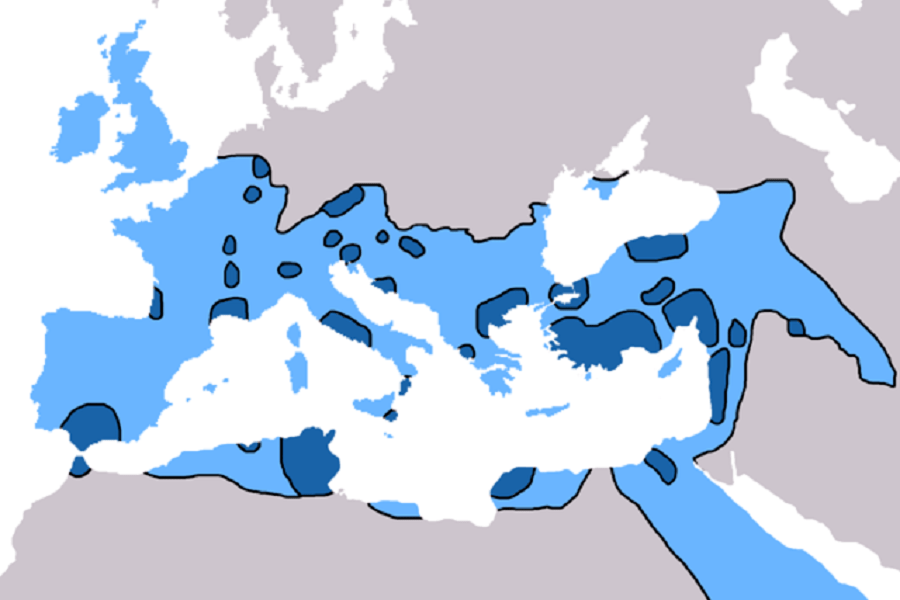
There are multiple factors and influences that contributed to the spreading of Christianity and its growth, such as encompassing the teachings of Jesus, the formation of early Christian communities, and the enduring legacy of martyrdom and persecution. These elements provide insights into the remarkable ascent of Christianity and its profound global influence.
The Life and Teachings of Jesus
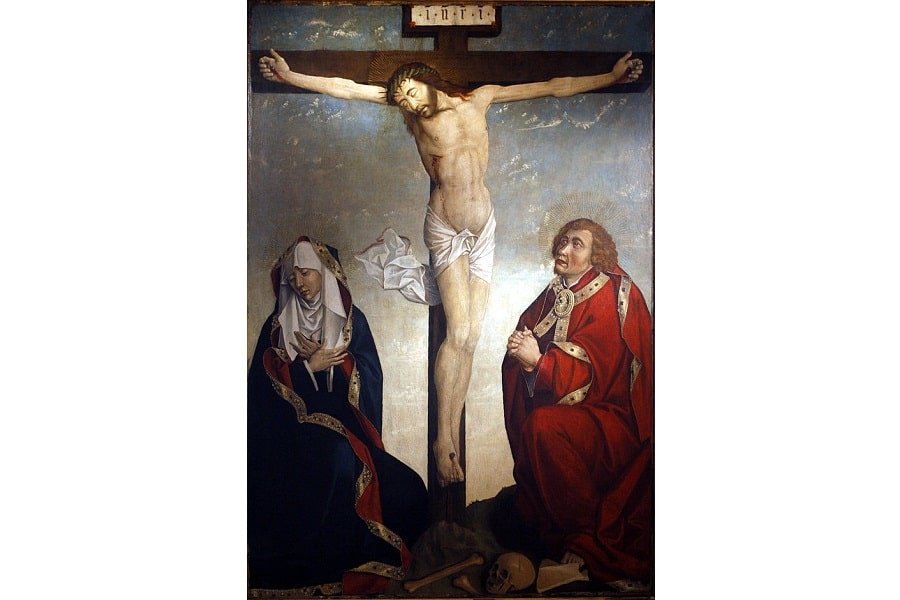
The life and teachings of Jesus serve as the foundation of Christianity. Jesus, born in Bethlehem and raised in Nazareth[4], embarked on a ministry that profoundly impacted his followers. His teachings encompassed a wide range of topics, including morality, spirituality, love, forgiveness, and the kingdom of God. Through his parables, such as the Good Samaritan, the Prodigal Son, and the Sermon on the Mount, Jesus communicated profound moral and ethical lessons that challenged the prevailing social norms of the time. He emphasized the importance of loving one’s neighbor, caring for the marginalized, and treating others with compassion and empathy[7]. Jesus’ teachings went beyond mere religious observance, calling for a personal relationship with God and the transformation of one’s inner being. His authority and wisdom were evident in his ability to heal the sick, perform miracles, and engage in deep theological discussions with religious leaders, captivating audiences with his profound insights.
Crucifixion and Resurrection
The crucifixion and resurrection of Jesus form the central pillars of Christian belief. Jesus’ crucifixion took place in Jerusalem, where he was condemned to death by the Roman authorities. This form of execution was exceptionally brutal, involving the nailing or binding of a person to a wooden cross. Christians believe that Jesus willingly endured this horrific death as a sacrifice to atone for humanity’s sins[4]. The crucifixion represents Jesus’ ultimate act of love and redemption, bearing the weight of humanity’s transgressions. However, the story does not end there. According to Christian belief, Jesus conquered death through his resurrection. On the third day after his crucifixion, Jesus rose from the dead, appearing to his followers and solidifying their conviction in his divine nature and mission. The resurrection is seen as a victory over sin and death, offering hope to believers and affirming the promise of eternal life.
Formation of Early Christian Communities
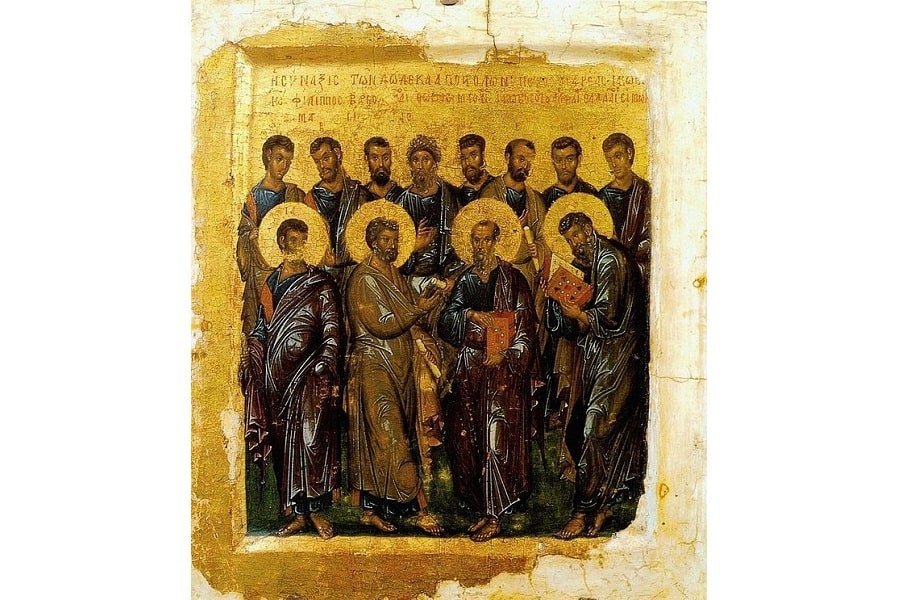
Following Jesus’ death and resurrection, early Christian communities began to emerge. The Twelve Apostles[3], chosen by Jesus during his ministry, played a crucial role in the formation and leadership of these communities. They were entrusted with carrying forward Jesus’ teachings and establishing the early Church. The apostles provided spiritual guidance, settled disputes, and fostered unity among believers. They were witnesses to Jesus’ life, teachings, crucifixion, and resurrection[6], making them instrumental in preserving the authenticity of the Christian message. The early Christian communities were characterized by a strong sense of communal living, shared resources, and collective worship. Believers supported one another, pooling their possessions to meet the needs of the community. They gathered for worship, prayer, and the breaking of bread, creating a bond that transcended societal divisions and fostered a distinct identity as followers of Jesus Christ.
Martyrdom and Persecution
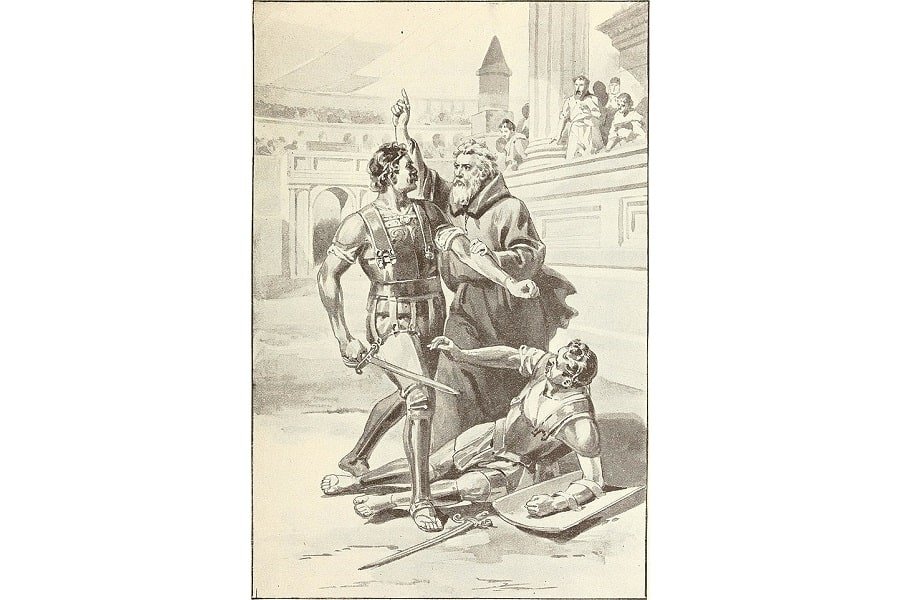
The rise of Christianity was accompanied by periods of intense persecution, particularly under the Roman Empire. Early Christians faced hostility and persecution for various reasons. They refused to worship the Roman emperors as a deity[1], considering it a direct violation of their monotheistic faith. Moreover, their refusal to participate in pagan rituals and practices, which were integral to the social fabric of the time, further alienated them from mainstream society. Many Christians endured persecution, imprisonment, and even death for their unwavering commitment to their faith. These individuals, known as martyrs, became powerful symbols of Christian devotion and sacrifice. Their steadfastness in the face of adversity inspired awe and admiration among fellow believers, solidifying their resolve and dedication to the Christian movement. The martyrdom[2] of early Christians served to strengthen the resolve of believers, propagate the faith, and exemplify the transformative power of a personal relationship with Jesus Christ.
How Did Christianity Spread to the US?
European Colonization and Christianization
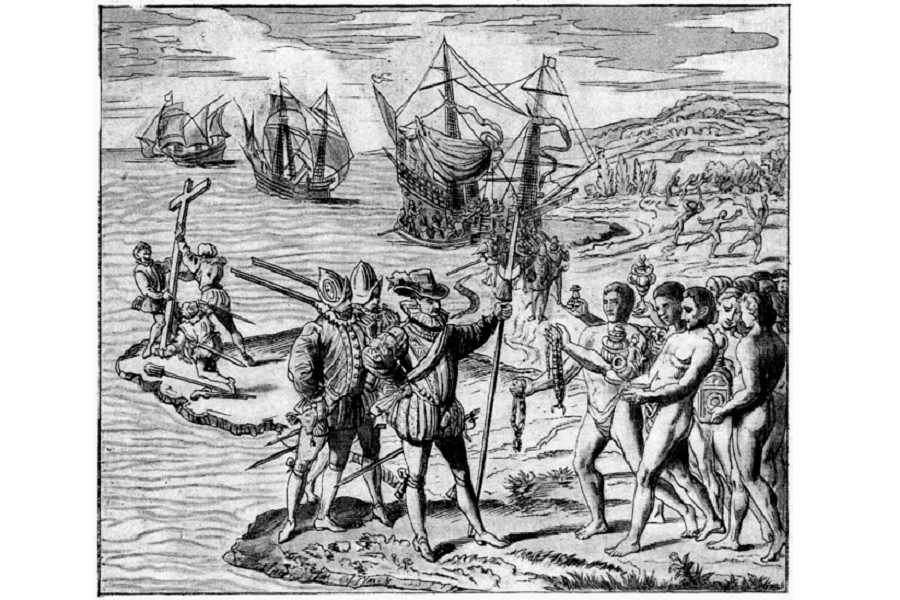
The arrival of European explorers and settlers in the Americas brought Christianity to the region. Spanish expeditions led by Christopher Columbus, Juan Ponce de León, and Hernando de Soto introduced Catholicism to areas such as Florida and the Southwest[2]. Catholic missionaries, including Franciscans and Jesuits, played a crucial role in the Christianization of Native American communities. They established missions and schools to teach Christianity, often blending indigenous traditions with Catholic rituals[3]. The Spanish Crown saw the conversion of indigenous peoples as a means of solidifying their control over the territories and fostering cultural assimilation.
READ MORE: Who Discovered America: The First People Who Reached the Americas
Similarly, English colonists, particularly the Pilgrims and Puritans, played a vital role in spreading Christianity. Seeking religious freedom, these groups settled primarily in New England. They established communities centered around congregational churches and strict adherence to biblical teachings[4]. The Puritans aimed to create a godly society based on their interpretation of Christianity. Their emphasis on personal piety, moral codes, and communal religious practices influenced the development of a distinct religious identity in New England.
Puritan Settlers and the Great Awakening

The settlement of Puritans in the 17th century[3] significantly impacted the spread of Christianity in the US. Their commitment to religious reform and adherence to biblical principles shaped the social, political, and religious landscape of New England. Puritan communities fostered strong religious discipline, combining church and state authority to enforce moral codes. They believed in the idea of a “covenant” with God, wherein obedience to God’s laws would ensure prosperity and divine favor[7].
The Great Awakening, an 18th-century religious revival, further fueled the growth of Christianity in the American colonies[7]. It was characterized by passionate sermons, emotional conversions, and fervent religious experiences. Prominent preachers like Jonathan Edwards and George Whitefield drew large crowds with their compelling oratory. The Great Awakening emphasized the importance of personal salvation and a direct, emotional connection with God. It challenged the established religious order and encouraged individuals to actively seek spiritual transformation. The revival sparked renewed religious fervor, leading to the formation of new churches[2], the spread of evangelicalism, and the rise of itinerant preachers.
Influence of Evangelical Revival
The 19th century witnessed the influence of evangelical revivals in spreading Christianity across the United States. Influential figures like Charles Finney and Dwight L. Moody led these revivals, which aimed to revive religious faith and promote personal conversion experiences. Revival meetings, often held in temporary camp structures, drew large crowds and created an atmosphere of religious fervor. These gatherings featured passionate preaching, heartfelt prayer[7], and emotional expressions of faith. The revivals sought to awaken individuals to their need for salvation, encourage moral reform, and inspire active engagement in evangelism and missionary work. They played a vital role in shaping the religious landscape of the United States, leading to the establishment of new churches, the growth of existing denominations, and the formation of Christian institutions[3].
Denominational Expansion and Diversity
As the United States experienced significant growth and attracted immigrants from different parts of the world, the religious landscape became increasingly diverse. Protestant denominations expanded their reach across the country through missionary efforts, church planting, and the establishment of educational institutions[5]. Baptists, Methodists, Presbyterians, and Episcopalians were among the prominent Protestant denominations that saw considerable growth during this period. Baptists[7], with their emphasis on individual liberty and believer’s baptism, established congregations throughout the country, particularly in the South. Methodists[6], known for their circuit-riding preachers and emphasis on personal piety, experienced rapid expansion across urban and rural areas. Presbyterians[7], with their strong Calvinist roots, established churches and educational institutions, contributing to the intellectual development of their followers. Episcopalians[7], influenced by Anglican traditions, maintained a significant presence, especially among the colonial elite.
The Catholic Church also witnessed significant growth in the United States, primarily fueled by immigration. The arrival of Irish, Italian, and other European Catholic immigrants in the 19th and early 20th centuries brought a surge in the Catholic population and the establishment of numerous parishes, schools, and social service organizations[3]. The Catholic Church played a vital role in providing spiritual and social support to immigrant communities, helping them preserve their cultural identity while integrating into American society.
The United States also became a hub for diverse Christian denominations originating from different parts of the world. Orthodox Christian churches, including the Greek Orthodox and Russian Orthodox, established congregations, reflecting the religious heritage of immigrant populations from Eastern Europe and the Middle East[2]. Protestant denominations such as the Lutheran Church and the Reformed Church found followers among European immigrants, each bringing their distinct theological and liturgical traditions. Eastern Christian communities, such as the Maronite Catholics and the Coptic Orthodox[6], maintained their religious traditions and established churches in the United States, adding to the rich tapestry of Christian diversity.
The Power of Calvinism: Fueling the Spread of Christianity
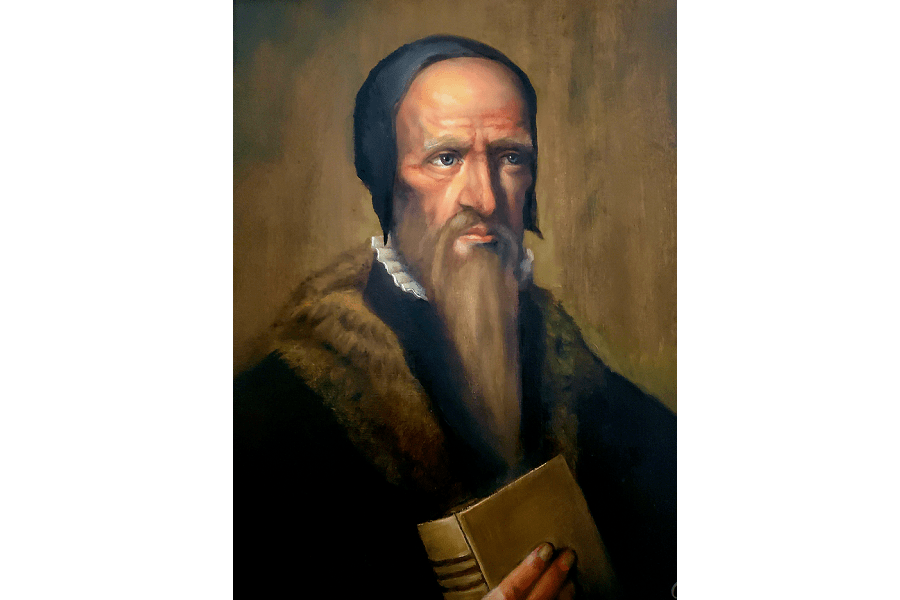
Calvinism and its powering factors worked synergistically, creating a fertile ground for the growth and impact of Christianity in various parts of the world. Calvinism’s influence extended beyond theological circles, leaving a lasting legacy in the history of Christianity and shaping the development of Christian traditions globally.
Theological Clarity and Doctrinal Precision
Calvinism’s theological clarity and emphasis on doctrinal precision were instrumental in the spread of Christianity. The system provided a comprehensive framework for believers to understand and articulate their faith. Concepts like predestination, the sovereignty of God, and the depravity of humankind offered a coherent and intellectually robust understanding of Christianity. This theological clarity not only attracted followers within Calvinist circles but also appealed to those seeking a well-defined and structured belief system.
Missionary Zeal and Global Expansion
Calvinism demonstrated remarkable missionary zeal, driving believers to actively engage in spreading Christianity worldwide. Calvinist communities established missionary organizations and sent missionaries to various parts of the world, including Africa, Asia, and the Americas. These missionaries were motivated by their faith and conviction to share the Gospel with unreached populations. Their efforts resulted in the establishment of Reformed churches, the conversion of individuals, and the growth of Christianity in new territories.
Educational Emphasis
Education played a significant role in the spread of Calvinism and Christianity. Calvinist communities placed a strong emphasis on education, establishing schools, colleges, and universities. These institutions provided believers with intellectual and theological training, equipping them to engage in evangelistic activities and effectively communicate their faith. The emphasis on education fostered a culture of intellectual engagement, critical thinking, and theological literacy among Calvinist followers. This educated cadre of believers played a vital role in advancing the spread of Christianity through their knowledge, skills, and ability to engage with diverse audiences.
Sociopolitical Influence
Calvinism’s teachings had a profound impact on the social and political landscape, contributing to the spread of Christianity. The emphasis on individual responsibility, moral values, and the worth of every individual influenced societies in profound ways. Calvinist principles played a role in shaping political systems that promoted religious freedom, tolerance, and social justice. The sociopolitical influence of Calvinism created an environment conducive to the growth of Christianity, allowing believers to freely practice and share their faith.
Reformed Church Networks
The establishment of Reformed churches and their organizational structures facilitated the spread of Calvinism and Christianity. Reformed churches provided a network for believers to connect, collaborate, and support each other in their evangelistic endeavors. The sense of community within these churches strengthened the spread of Christianity as believers worked together to share the Gospel and disciple new converts. The establishment of denominational structures also provided a framework for theological training, leadership development, and the coordination of missionary efforts.
How Christianity Spread Throughout Europe?
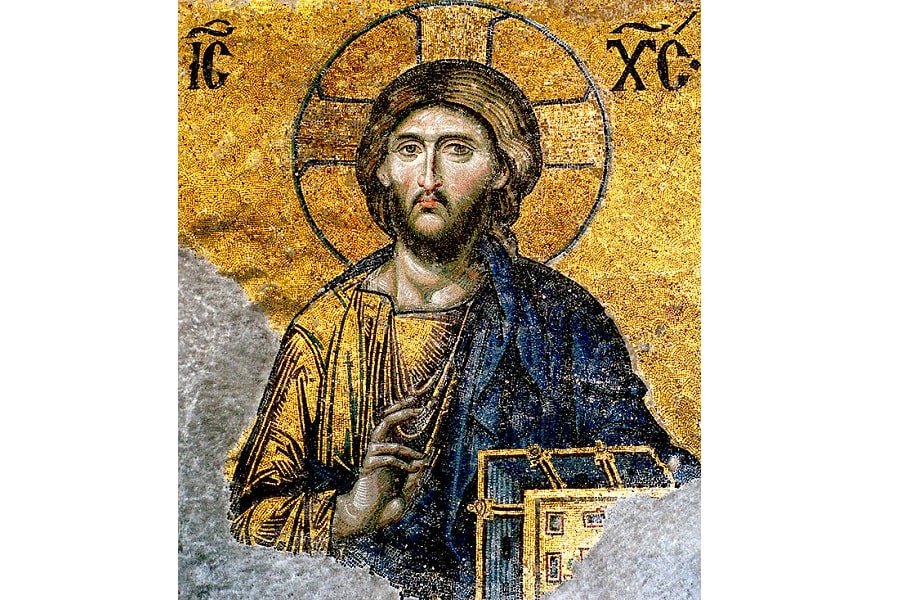
Early Christian Missionaries
The spread of Christianity throughout Europe was initiated by early Christian missionaries who embarked on arduous journeys to bring the message of Jesus Christ to new lands. These missionaries, such as Paul the Apostle and other disciples, traveled extensively, often enduring significant hardships, to establish communities of believers and spread the teachings of Christianity. They faced cultural and linguistic challenges as they encountered diverse populations[1], adapting their approach to effectively communicate the Gospel. Despite persecution and resistance, their unwavering dedication and commitment to their mission laid the foundation for the growth and expansion of Christianity across Europe.
Conversion of the Roman Empire
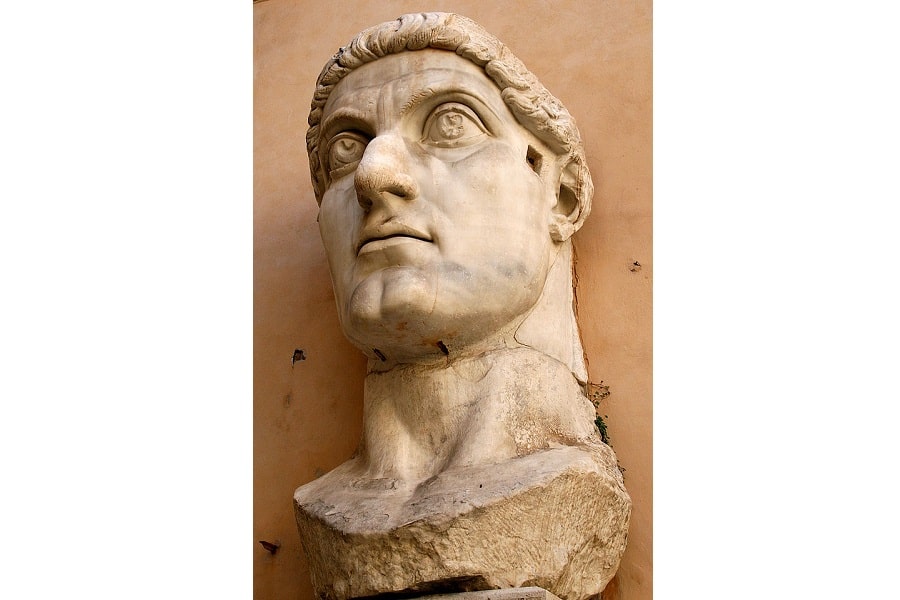
One of the pivotal factors in the spread of Christianity throughout Europe was the conversion of the Roman Empire. The conversion of Emperor Constantine to Christianity in the 4th century CE marked a significant turning point. With the Edict of Milan in 313 CE[3], Christianity was officially tolerated, and it eventually became the favored religion of the empire. This shift in imperial support provided Christians with a level of legitimacy and allowed for the construction of churches, the spread of Christian teachings, and the conversion of a substantial portion of the Roman population. The influence of Christianity expanded as it became intertwined with the political and cultural fabric of the empire.
Christianization of Barbarian Kingdoms
Following the decline of the Roman Empire, Europe witnessed the migration and establishment of various barbarian kingdoms[1]. These kingdoms, including the Visigoths, Ostrogoths, Vandals, and Franks, gradually embraced Christianity through a process known as Christianization. Christian missionaries played a crucial role in this process, entering these territories and working to convert their rulers and populations. They adapted their approach to resonate with the values and beliefs of these societies, incorporating elements of local customs and traditions into Christian practices. The conversion of these Barbarian kingdoms not only spread Christianity geographically but also influenced the culture, laws, and governance of these societies. Christian principles began to shape the legal systems and moral frameworks of these kingdoms, impacting their social structures and practices[5].
Role of Monasticism and Monastic Centers

Monasticism played a significant role in the spread of Christianity throughout Europe. Monastic communities, such as those established by Saint Benedict of Nursia[3], emerged as centers of religious devotion, scholarship, and missionary activity. Monasteries served as educational institutions, preserving and disseminating knowledge, including theological teachings, classical texts, and practical skills. Monastic centers also became hubs for missionary efforts, sending out monks and nuns to evangelize and establish new Christian communities in distant regions. These monastic networks provided a framework for the organized spread of Christianity, with monastic orders playing pivotal roles in the conversion and Christianization of various regions in Europe. Monasticism also influenced the development of art, architecture, agriculture, and healthcare, contributing to the overall cultural and societal transformation brought about by Christianity[4].
Who Spread Christianity?
The Apostles and Early Disciples

The initial spread of Christianity can be attributed to the apostles and early disciples of Jesus Christ. After the death and resurrection of Jesus, these devoted followers began proclaiming the Gospel message. Peter, one of the prominent apostles, played a crucial role in spreading Christianity to Jewish communities. James, the brother of Jesus, served as a key leader in the early Christian movement in Jerusalem[3]. John, another apostle, played a significant role in establishing Christian communities and authoring important biblical texts. These early disciples, empowered by the Holy Spirit, fearlessly shared the teachings of Jesus, attracting converts and establishing the foundation of the early Christian Church.
Paul the Apostle and Missionary Journeys
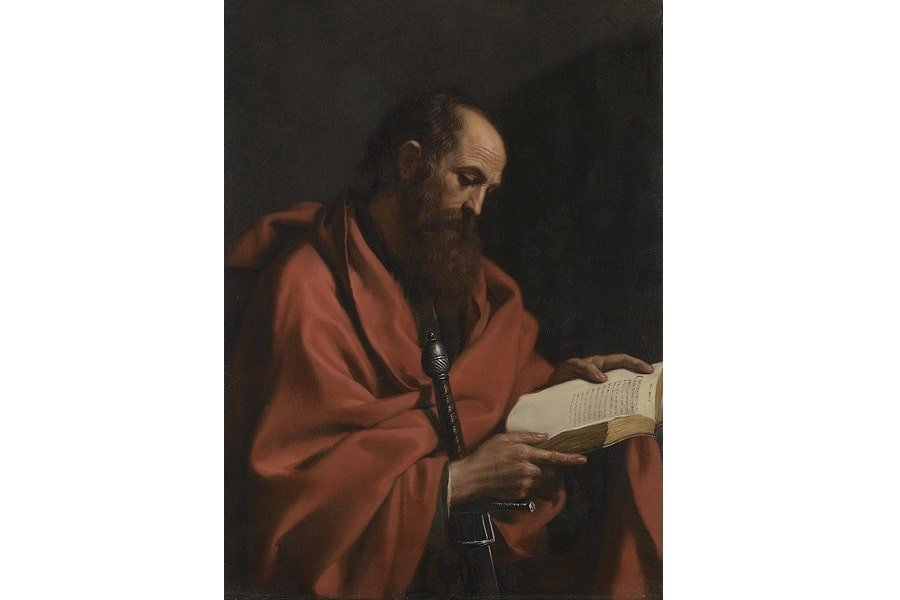
Paul the Apostle, formerly known as Saul, made remarkable contributions to the spread of Christianity through his missionary journeys. Following his conversion on the road to Damascus, Paul became one of the most influential figures in the early Christian movement. He embarked on several missionary journeys, traveling throughout the Roman Empire to establish new Christian communities. Paul’s journeys took him to cities such as Antioch, Ephesus, Corinth, and Rome, where he preached the Gospel, established churches, and wrote letters to these communities[5]. His teachings focused on the reconciling power of Jesus’ death and resurrection and the inclusive nature of Christianity, welcoming both Jews and Gentiles into the faith. Paul’s efforts significantly contributed to expanding Christianity beyond its Jewish roots and developing a distinct Gentile Christian identity.
Byzantine Missionaries
During the Byzantine Empire, Christianity continued to spread through the efforts of Byzantine missionaries. These missionaries, often associated with monastic communities, ventured into new territories to convert and establish Christian communities. One notable example is the mission of Cyril and Methodius in the 9th century. These brothers, known as the “Apostles to the Slavs,” developed the Cyrillic alphabet and translated religious texts into Slavic languages. This translation work enabled the dissemination of Christian teachings in regions like Bulgaria, Serbia, and Russia, and laid the foundation for the Christianization of the Slavic peoples. The Byzantine missionaries played a vital role in spreading Orthodox Christianity and establishing its influence in Eastern Europe[5].
Medieval and Modern Missionaries
During the medieval period and beyond, Christianity continued to spread through the efforts of numerous missionaries. The Catholic Church, through orders like the Franciscans, Dominicans, and Jesuits, played a central role in sending missionaries to various parts of the world[5].
Catholic missionaries
Notable Catholic missionaries include Francis Xavier, who traveled to India, Japan, and other parts of Asia, and Matteo Ricci, who ventured to China. These missionaries faced immense challenges, encountering different cultures, languages, and religious beliefs. They adapted their approaches, learned local languages, and engaged in dialogue with indigenous peoples[1]. Their efforts resulted in the establishment of Christian communities and the integration of Christianity with local customs and traditions.
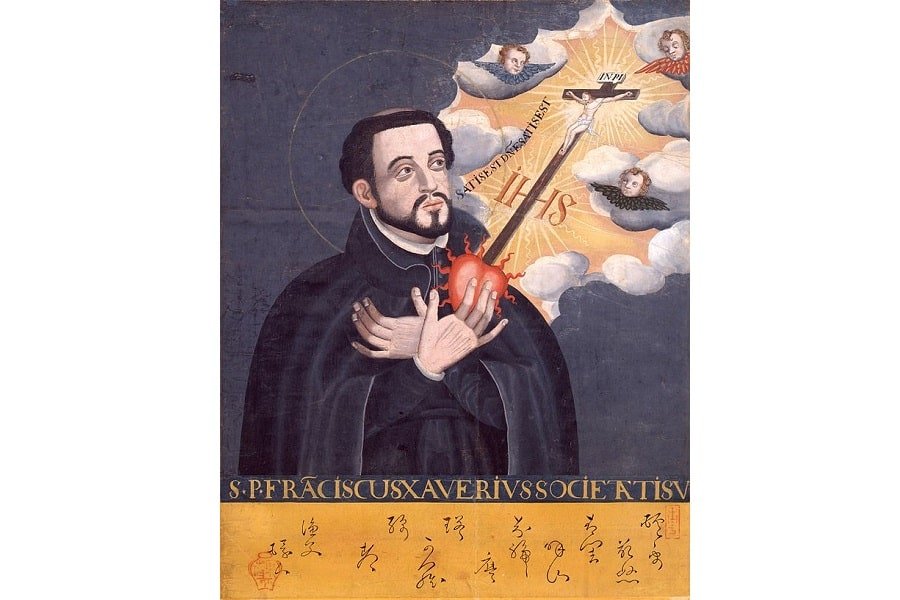
Protestant missionaries
In more recent times, Protestant missionaries have played a significant role in spreading Christianity globally. Particularly during the colonial era, Protestant missionaries from various denominations ventured to Africa, the Americas, Asia, and the Pacific Islands[4]. They established schools, hospitals, and churches, and engaged in evangelistic activities. These missionaries sought to bring the message of Christianity to indigenous peoples and often faced significant cultural, linguistic, and societal barriers. Their work contributed to the growth of Protestant Christianity worldwide.
The work of missionaries in translating and preserving religious texts, such as the Bible, into local languages has been instrumental in enabling people to access and understand Christian teachings[1]. They also played a significant role in the development of indigenous Christian expressions, blending elements of local culture and traditions with Christian beliefs and practices.
Furthermore, missionaries contributed to the development of educational institutions, establishing schools and universities that provided education and literacy to communities. They promoted the importance of knowledge, critical thinking, and intellectual growth, fostering advancements in various fields and disciplines.
When Did Christianity Spread?
Early Christian Era
The spread of Christianity can be traced back to the early Christian era, specifically after the death and resurrection of Jesus Christ in the 1st century AD[5]. Following these events, the apostles and early disciples embarked on missionary journeys, spreading the teachings of Jesus throughout the Eastern Mediterranean region. The early Christian communities emerged primarily in cities such as Jerusalem, Antioch, and Alexandria. Despite facing persecution and challenges, the message of Christianity spread among Jewish communities, Gentiles, and various ethnic groups, attracting followers and establishing the foundation of the early Christian Church[2].

Spread During the Roman Empire
The expansion of Christianity accelerated during the Roman Empire, particularly in the 4th century AD. Christianity gained significant traction under the patronage of Emperor Constantine, who issued the Edict of Milan in 313 AD[2], granting religious tolerance and freedom to Christians. The subsequent conversion of Constantine to Christianity and the adoption of Christianity as the official religion of the Roman Empire by Emperor Theodosius I in 380 AD marked pivotal moments in the spread of the faith. The imperial support provided resources and protection, leading to the construction of churches, the establishment of Christian theological and educational institutions, and the conversion of a considerable portion of the Roman population to Christianity[2].
Medieval Expansion and Conversion
During the Middle Ages, Christianity continued to spread, both geographically and among diverse populations. The conversion of barbarian kingdoms in Europe played a crucial role in expanding Christianity’s influence. Missionaries, such as St. Patrick in Ireland, St. Augustine of Canterbury in England, and Cyril and Methodius in Eastern Europe, ventured into pagan territories, preaching the Gospel and establishing Christian communities[2]. Additionally, the Crusades, which took place from the 11th to the 13th centuries, resulted in encounters between Christians and Muslims, leading to cultural and religious exchanges. While the Crusades were primarily military campaigns, they inadvertently facilitated the spread of Christianity to regions such as the Holy Land, the Eastern Mediterranean, and even parts of Eastern Europe.
Global Missionary Movements
From the 15th century onward, global missionary movements played a significant role in spreading Christianity to various parts of the world. The Age of Exploration and Colonization opened up opportunities for European Christian missionaries to venture into Africa, the Americas, Asia, and the Pacific Islands[4]. The Catholic Church, as well as Protestant denominations, sent missionaries to these regions with the aim of converting indigenous peoples and establishing Christian communities. Notable examples include the efforts of Catholic missionaries in Latin America, the Jesuit missions in China and Japan[6], and the Protestant missionary activities in Africa and India. These movements led to the establishment of Christian churches, the translation of religious texts into local languages, and the integration of Christianity with local customs and traditions.
Who Spread Christianity in Rome?
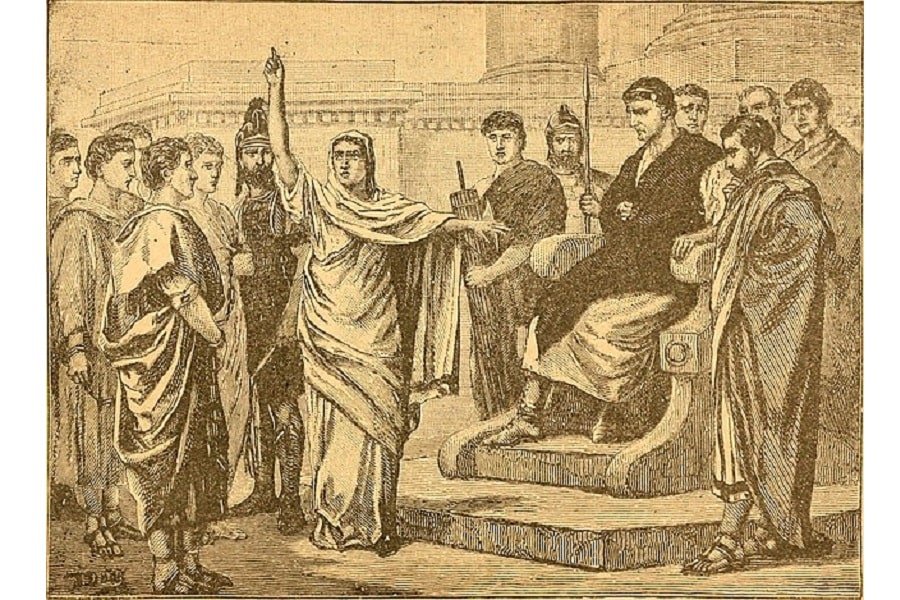
The spread of Christianity in Rome was a complex process influenced by various factors and individuals who played significant roles in its establishment and growth.
Early Christian Communities in Rome
The presence of early Christian communities in Rome was instrumental in the initial spread of Christianity. These communities likely emerged during the early years of the Christian movement through the efforts of Christian travelers, merchants, and Jewish converts to Christianity. These small Christian communities operated discreetly, gathering in private homes for worship and fellowship[6]. The early Christians faced periods of persecution under Roman authorities, as Christianity was not yet recognized as a legal religion. However, despite these challenges, the Christian faith continued to spread among the diverse population of Rome.
Influence of Paul the Apostle
One of the most influential figures in the spread of Christianity in Rome was Paul the Apostle, also known as St. Paul. Paul’s significant impact on Christianity can be attributed to his missionary journeys and epistles (letters) addressed to various Christian communities. According to biblical accounts, Paul traveled to Rome as a prisoner, but even in his captivity, he continued to spread the Gospel message and teach about Jesus Christ[3]. His teachings emphasized the reconciling power of Jesus’ death and resurrection, highlighting the core message of salvation through faith in Christ. Paul’s writings and teachings helped shape the early Christian theology in Rome and contributed to the growth and development of the Christian community.
Emperor Constantine and the Conversion of Rome
The conversion of Emperor Constantine to Christianity in the early 4th century AD played a pivotal role in the spread of Christianity in Rome. Constantine’s conversion was influenced by a vision he had before a significant battle, which he interpreted as a sign from the Christian God[1]. He emerged victorious in the battle and subsequently issued the Edict of Milan in 313 AD, granting religious tolerance to Christians and ending the persecutions they faced. Constantine’s conversion and the subsequent shift in Roman policies towards Christianity allowed the faith to flourish openly. Christianity gained imperial favor and protection, leading to the construction of grand basilicas and the establishment of Christian institutions in Rome.
Role of Roman Bishops (Papacy)
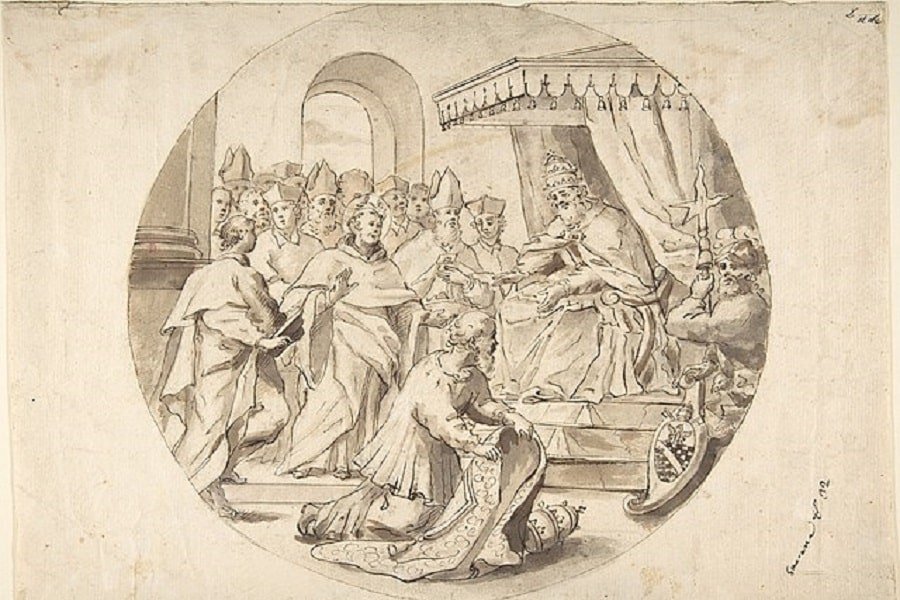
The role of the Roman bishops, particularly those who occupied the position of the Bishop of Rome, known as the Pope, was crucial in the spread and establishment of Christianity in Rome. The emergence of the Papacy as a central authority within the Christian Church gave the Bishop of Rome significant influence and authority[1]. As Rome was the political and cultural center of the Roman Empire, the Bishop of Rome became an influential figure in both religious and secular affairs. The Pope provided leadership, guidance, and pastoral care to the growing Christian community in Rome. The Papacy played a key role in doctrinal matters, such as the formulation of creeds and the resolution of theological disputes, which helped shape the development of Christianity in Rome and beyond.
In addition to these key factors and individuals, the devotion and commitment of early Roman Christians cannot be overlooked. The faith and witness of ordinary believers, who lived out their Christian convictions even in the face of persecution, played a significant role in attracting others to the faith and fostering its growth within the city[6].
Was Christianity Spread by Force?
It is essential to acknowledge that isolated incidents of forced conversions or coercion occurred throughout history, but they were not representative of the overall spread of Christianity. The primary means of spreading Christianity involved voluntary conversions, the influence of missionaries, the appeal of Christian teachings, and the personal choices of individuals. Christianity’s growth and influence can be attributed to the transformative power of its message, the dedication of its followers, and its resonance with the spiritual and intellectual needs of people across different societies and cultures[7].
Throughout history, the spread of Christianity has been influenced by various factors, and while instances of forced conversion and coercion have occurred, they do not represent the primary means by which Christianity spread[5].
Early Christian Persecution
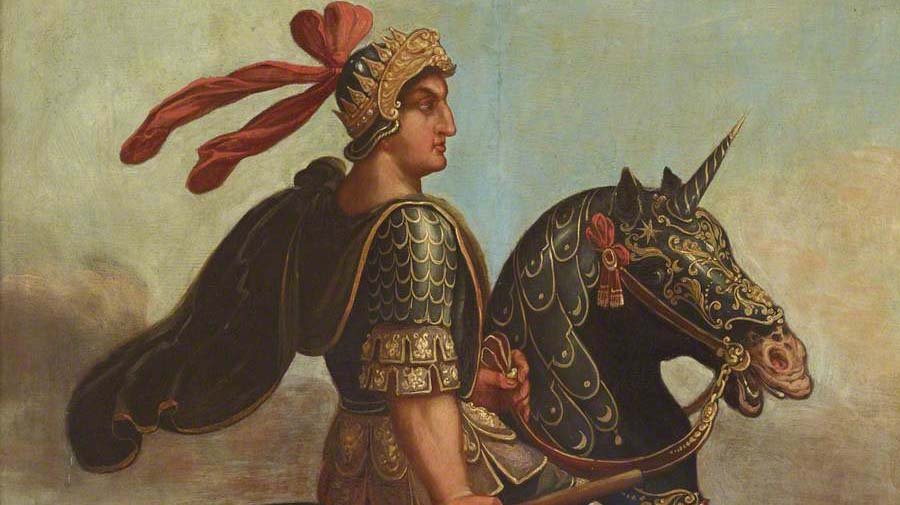
During the early years of Christianity, followers of the faith faced severe persecution from the Roman Empire. Emperors such as Nero and Diocletian implemented policies aimed at suppressing Christianity, leading to the martyrdom of many Christians[5]. These persecutions included public executions, imprisonment, confiscation of property, and the destruction of Christian texts and places of worship. Despite the hostile environment, early Christians remained steadfast in their beliefs, and their commitment to the faith played a significant role in its resilience and eventual growth[1]. However, it is important to note that the spread of Christianity during this period was primarily driven by the voluntary conversion of individuals who found solace and hope in the Christian message rather than through forced means.
Forced Conversion During the Crusades
The Crusades, a series of military campaigns initiated by Christian European powers in the 11th to 13th centuries, aimed to reclaim holy sites in the Middle East from Muslim control. While the Crusades were motivated by a combination of religious, economic, and political factors, including the desire to expand Christian influence[4], forced conversion was not the central objective. While there were instances of violence and coercion, particularly during the capture of Jerusalem in the First Crusade, the Crusades were complex endeavors shaped by a range of factors. The primary goals were often territorial gains, political influence, and securing trade routes, rather than widespread forced conversions.
Coercion and the Spanish Inquisition
The Spanish Inquisition, established in the late 15th century, sought to combat heresy and maintain religious orthodoxy within Spain[1]. While the Inquisition did employ coercive measures, including torture and execution, to enforce religious conformity and eliminate perceived threats to Catholic orthodoxy, the primary focus was not the spread of Christianity itself. The Inquisition primarily targeted individuals suspected of heresy, including Jews, Muslims, and non-Catholic Christians[5], aiming to eliminate religious dissent and promote Catholic unity within Spain. It is important to note that the Inquisition was a product of its time, reflecting the religious tensions, political aspirations, and cultural context of 15th-century Spain.
Where Did Christianity Originate From?
The convergence of these factors—Judea’s religious and cultural heritage, the life and ministry of Jesus, the emergence of early Christian communities, and the influences of Jewish tradition and Hellenistic culture—gave rise to Christianity as a distinct and transformative religious movement[5]. From its humble beginnings, Christianity rapidly spread across the Eastern Mediterranean and beyond, transcending cultural and geographic boundaries. The message of Jesus, along with the dedication and missionary efforts of early Christian communities, played a pivotal role in the expansion of the faith.
Understanding the origins of Christianity provides valuable insights into the historical[5] context and foundational beliefs of the faith. The early developments in Judea and the Eastern Mediterranean set the stage for Christianity’s growth and subsequent impact on the world, shaping the course of religious and cultural history.
Roots in Judea and Ancient Israel
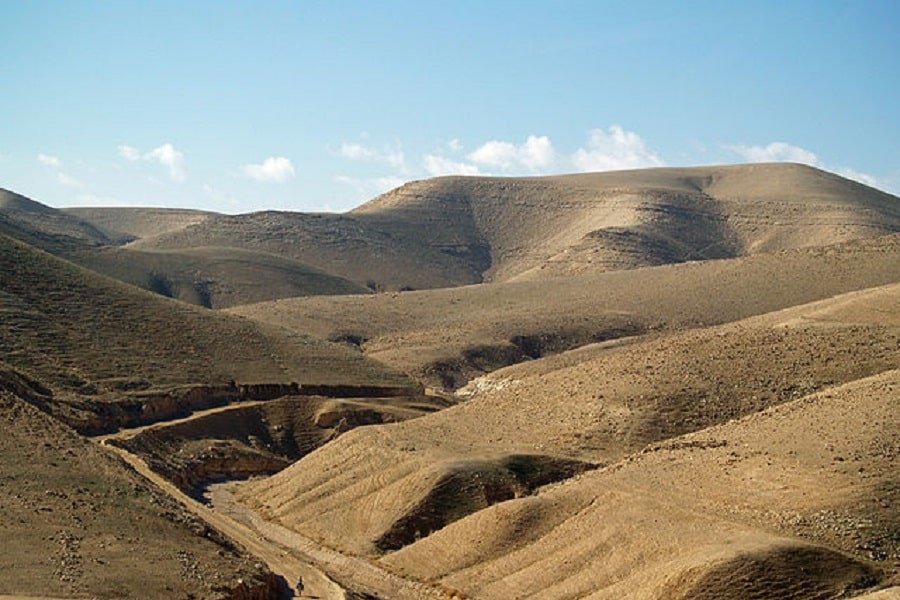
Christianity traces its roots to the region of Judea, which was part of the ancient Israelite kingdom. Located in the Eastern Mediterranean, Judea was a land deeply influenced by Jewish religious and cultural practices[1]. The ancient Israelites, under the covenant with God, worshipped Yahweh as the one true God and adhered to the laws and teachings of the Hebrew scriptures. The theological and cultural foundation established by Judaism laid the groundwork for the emergence of Christianity.
READ MORE: Ancient Civilizations Timeline: The Complete List from Aboriginals to Incans
Life and Ministry of Jesus
The life and ministry of Jesus of Nazareth serve as the cornerstone of Christianity. Born in Bethlehem and raised in Nazareth, Jesus embarked on a transformative mission in his early thirties, preaching a message of love, compassion, and forgiveness. He performed miracles, taught in parables, and challenged religious and societal norms of the time. Jesus’ teachings focused on the arrival of the Kingdom of God, the importance of faith, and the need for repentance. His life, sacrificial death on the cross, and resurrection became the central events that shaped the core beliefs of Christianity[6].
Early Christian Communities in the Eastern Mediterranean

Following the death and resurrection of Jesus, early Christian communities began to form in the Eastern Mediterranean region. These communities initially comprised Jewish converts who recognized Jesus as the long-awaited Messiah promised in Jewish scriptures. These early Christians continued to observe Jewish customs while embracing the teachings of Jesus[2]. The Jerusalem Church, led by Jesus’ disciples and later James, the brother of Jesus, played a crucial role in nurturing and expanding these early Christian communities. As the movement grew, it spread to cities such as Antioch, Alexandria, and Ephesus, establishing a network of communities connected by their faith in Jesus Christ[2].
READ MORE: The Lighthouse of Alexandria: One of the Seven Wonders
Influence of Jewish Tradition and Hellenistic Culture
The origins of Christianity were shaped by both Jewish tradition and the broader Hellenistic culture prevalent in the Eastern Mediterranean during that time. Jewish tradition provided the religious and cultural context within which Jesus and his followers operated. The Hebrew scriptures, including the Torah, Psalms, and Prophets[5], were foundational texts that Jesus drew upon to articulate his teachings. Furthermore, the concept of the Messiah, deeply rooted in Jewish tradition, became central to the Christian belief in Jesus as the Anointed One. On the other hand, the Hellenistic culture, infused with the Greek language, philosophy, and thought, had a significant influence on the early Christian movement. The Greek language became the lingua franca of the Eastern Mediterranean[6], facilitating the spread of Christian ideas and enabling communication among diverse cultural groups.
Looking Forward
The study of Christianity’s history and its spread provides us with valuable insights into the development and impact of one of the world’s major religions. It highlights the transformative power of faith, the role of influential leaders and communities, and the interplay between religion, culture, and politics. Understanding the origins and growth of Christianity helps us appreciate the diversity of religious beliefs and traditions across different regions and provides a historical context for interfaith dialogue and cooperation in today’s globalized world.
Furthermore, the historical journey of Christianity reminds us of the importance of religious freedom, tolerance, and respect for diverse beliefs. It teaches us to appreciate the contributions of various cultures and traditions in shaping our societies. Christianity’s message of love, compassion, and social justice continues to inspire individuals and communities worldwide to work towards a more just and equitable world.
In our present world, the knowledge gained from studying the rise and spread of Christianity encourages us to foster understanding and dialogue among different religious and cultural groups. It reminds us of the need for empathy, compassion, and mutual respect in our interactions with others. By learning from the historical experiences of Christianity, we can strive for peaceful coexistence, promote interfaith harmony, and work towards common goals of human dignity, social justice, and global solidarity.
References
- Bartlett, R. (2010). The Making of Europe: Conquest, Colonization, and Cultural Change, 950-1350. Penguin Books.
- Chadwick, H. (1993). The Early Church. Penguin Books.
- Duffy, E. (2006). Saints and Sinners: A History of the Popes. Yale University Press.
- Gonzalez, J. L. (2010). The Story of Christianity: Volume 1: The Early Church to the Dawn of the Reformation. HarperOne.
- MacCulloch, D. (2010). Christianity: The First Three Thousand Years. Penguin Books.
- Noll, M. A. (2013). Turning Points: Decisive Moments in the History of Christianity. Baker Academic.
- Pelikan, J. (2013). The Christian Tradition: A History of the Development of Doctrine, Vol. 1: The Emergence of the Catholic Tradition (100-600). University of Chicago Press.
What is the impact of Christianity to Mankind?
Is it positive or negative?